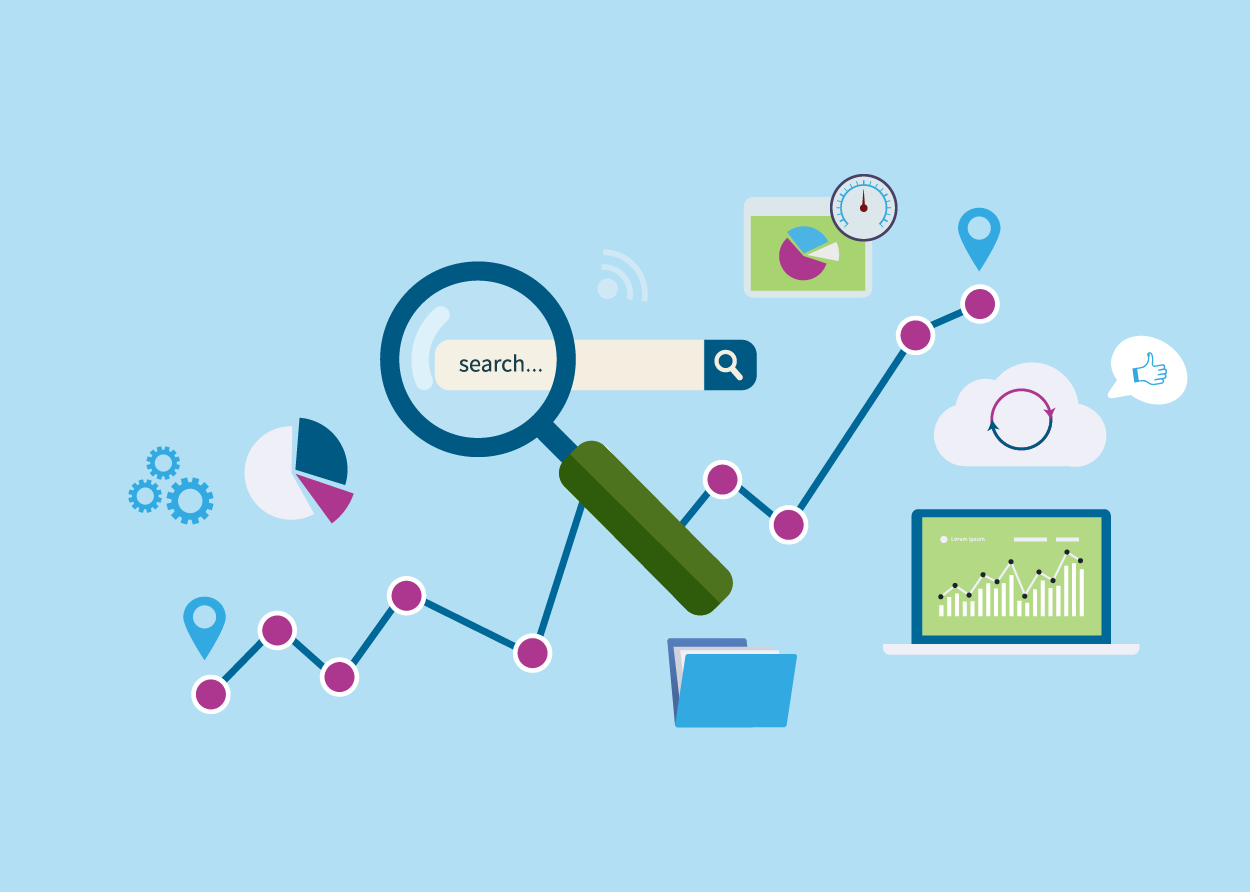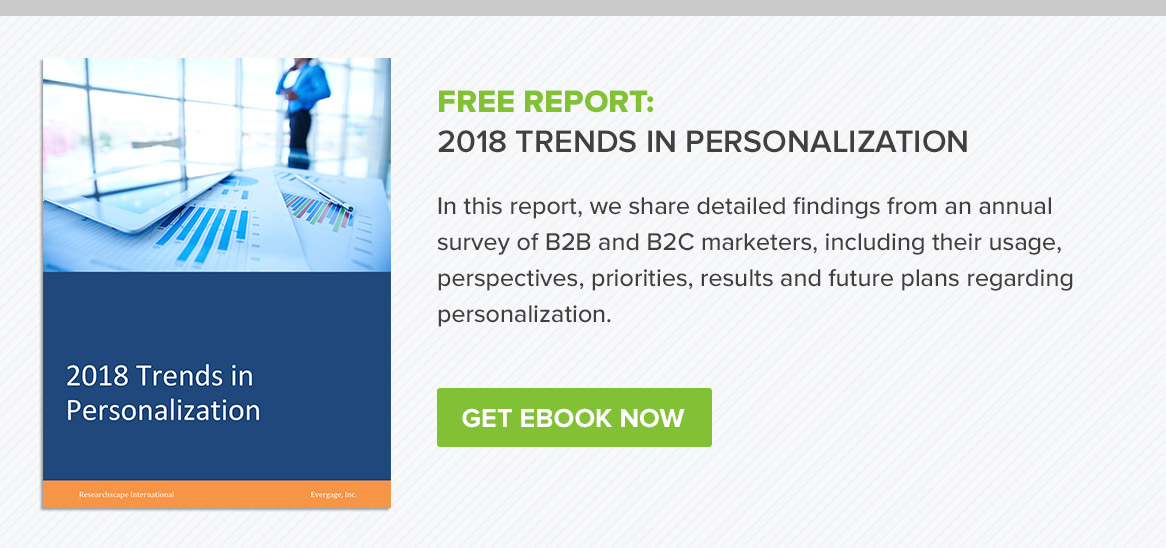Marketers have always dreamed of being able to talk to customers and potential clients on a personal level. However, true one-to-one communication can’t happen without technology that gathers, understands, and uses data in real time to provide the best experience for each person. Today, the technology is available to turn the one-to-one dream into reality. So, how are marketers using that technology in their strategies? What does personalization look like now?
That’s what we set out to discover in our fifth annual study with Researchscape International, 2018 Trends in Personalization. The report, which is based on a survey of 300 B2B and B2C marketers from organizations of different sizes and industries conducted in February and March of this year, examines marketers’ attitudes, usage, results and future plans relating to personalization. We compiled some of the key findings in this stat-filled infographic.
Building on the trends we saw last year, marketers certainly see the value that personalization brings to their customer experiences. We found that 98% of marketers believe that personalization advances customer relationships — with 74% believing it has a “strong” or “extreme” impact. As a result, 92% of marketers using personalization report employing it in at least one channel, and 97% plan to maintain or increase their personalization budget this year.
Yet marketers aren’t quite satisfied with this level of adoption and investment. The majority (77%) believe that personalization should be a bigger priority in their organizations — and this number is up four points from last year.
It’s also apparent that marketers don’t feel the industry has cracked the code on personalization just yet, as 69% feel that marketers, on average, are not getting personalization right. More than half (55%) don’t feel they have the data and insights necessary for effective personalization, while a quarter (27%) do not have any of their channels connected.
While marketers are still working through the challenges of bringing data sources together and sorting out their omnichannel strategies, 87% of marketers using personalization report a measurable lift in results. This key finding is the main reason for all the attention being paid and resources being applied to personalization programs.
To access many more interesting findings from the survey, download the full report. To find out what these findings mean for the present and future state of personalization, sign up for our live, 30-minute webinar tomorrow, April 26.

